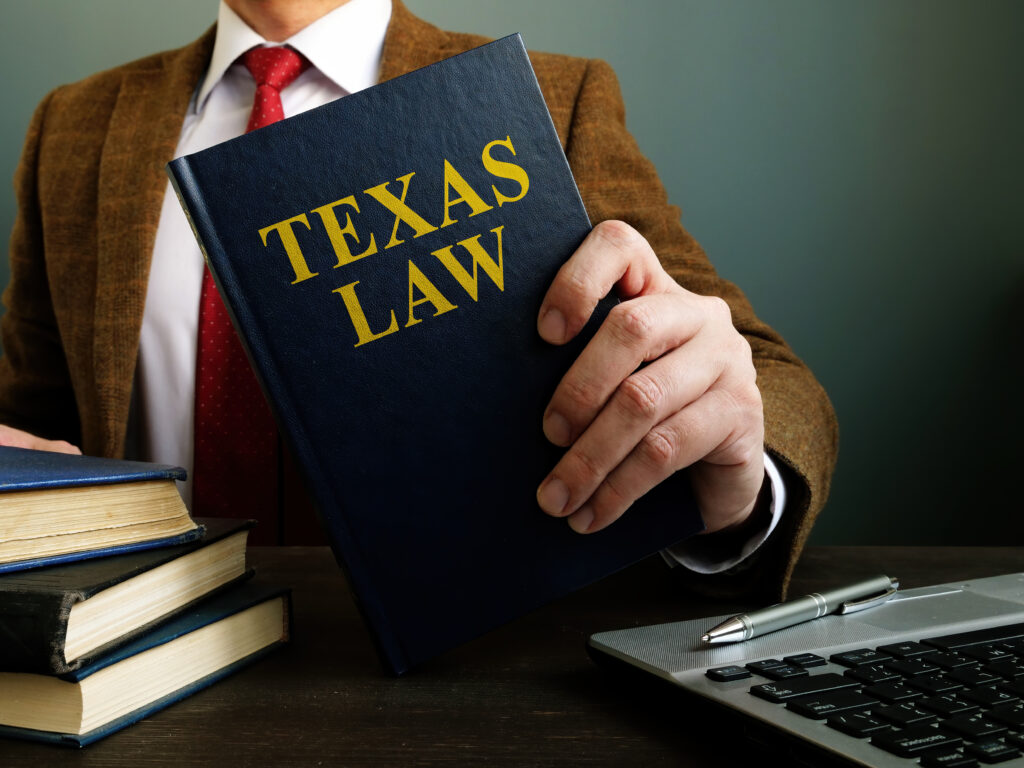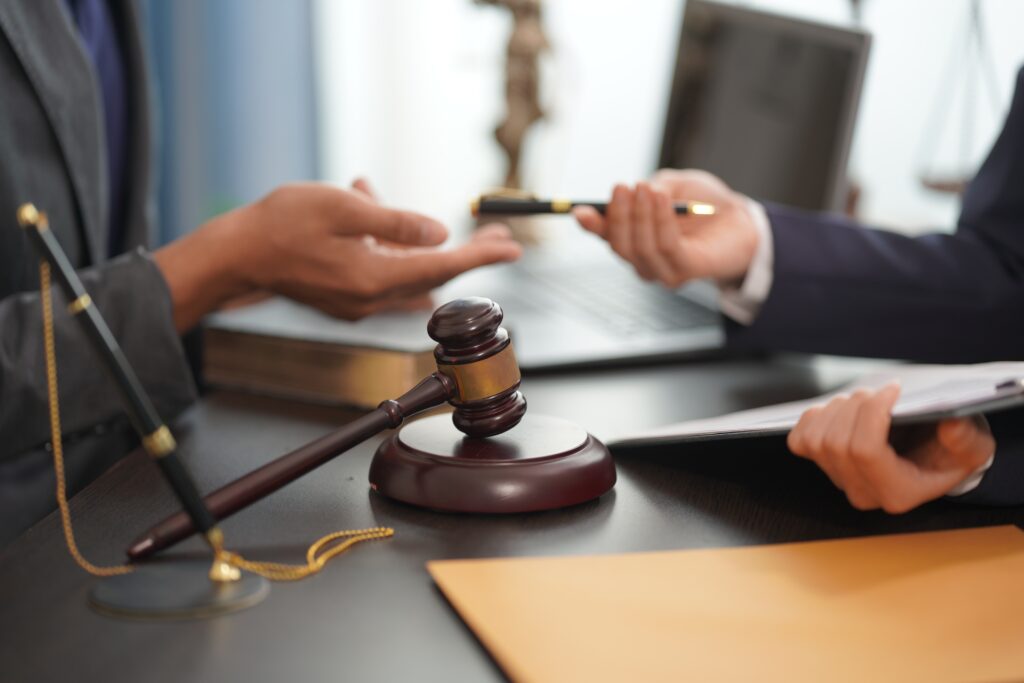When merging onto a freeway, you must yield the right-of-way to vehicles already on the freeway. Texas law requires drivers on the merge ramp to either adjust speed to find a gap to merge into or stop until there is space to enter safely. Knowing and following proper merging etiquette keeps traffic flowing smoothly and reduces the risk of collisions. This article will explain Texas laws regarding merging onto freeways and provide tips to merge safely and courteously. We will cover speed adjustment, signaling, and defensive driving when entering a freeway from a merge lane. Proper merging benefits all drivers, so be sure to read on to learn how you can merge correctly. A Midland car accident lawyer can assist you in navigating the claims process and fighting for the compensation you deserve.
Understanding Texas Laws for Merging Onto the Freeway
When entering a freeway in Texas, it is critical to understand the laws around merging to ensure safety and avoid traffic violations. Here are some key points to keep in mind:

- The vehicle entering the freeway must yield the right-of-way to vehicles already on the freeway. This means properly matching your speed to traffic flow and finding an acceptable gap to merge into smoothly.
- Texas follows the "zipper merge" principle. At the end of an on-ramp, vehicles should take turns alternating to merge one at a time into the freeway traffic. Do not force your way into traffic.
- It is against the law to stop completely on an acceleration lane or ramp except when absolutely necessary. Come to a complete stop only if there are no gaps and traffic is at a standstill.
- Use your signals and adjust speed appropriately when merging. Put on your turn signal 100-200 feet before reaching the end of the ramp.
- Be aware of road signs, speed limits, and lane markings. Obey all posted instructions and speed limits.
- Avoid distractions and give merging your full attention. Put down mobile devices and focus on safely entering the flow of traffic.
- If you miss your exit, do not stop and back up. Keep going to the next exit to loop back around. Backing up on an active freeway is illegal and extremely dangerous.
By being alert, courteous and following right-of-way rules, you can safely merge onto Texas freeways. Allow plenty of distance between vehicles, use signals, and match prevailing speeds. This will help avoid collisions or traffic offenses when entering the freeway.
The Importance of Yielding When Merging
When entering a freeway, it is critical that you properly yield to traffic already on the highway. This not only prevents accidents, but is legally required under Texas transportation laws.
Here are some key points on safely merging onto a freeway:
- As you approach the freeway entrance ramp, be sure to signal and adjust your speed accordingly. Slow down to the posted speed limit for the ramp.
- Look for gaps in traffic as you reach the end of the ramp. You must yield the right-of-way to vehicles already traveling on the freeway.
- Match your speed to other cars before merging. Find a gap, signal, and carefully blend into traffic. Do not force your way in.
- If traffic is heavy and there are no gaps, you may need to come to a complete stop before finding space to merge. Always yield to existing traffic.
- Avoid stopping mid-ramp if possible, as this can surprise other drivers and cause accidents. But stopping is better than unsafe merging.
- Be aware of vehicles around you at all times. Check mirrors and blind spots before changing lanes.
- Use turn signals and adjust speed smoothly when merging. Sudden braking or acceleration can be dangerous.
- Stay calm and courteous. Do not take merging personally. Focus solely on driving safely.
- Certain ramps have dedicated acceleration/deceleration lanes. Use these to safely gain speed or slow down before blending into traffic.
By properly yielding, signaling, and maintaining safe speeds, you can merge seamlessly and avoid hazardous situations. Following right-of-way laws preserves traffic flow and prevents collisions. Merging with care protects all drivers sharing the road.
When You Have the Right-of-Way When Merging
When merging onto a freeway in Texas, it is important to understand who has the right-of-way in order to merge safely and avoid collisions. As the merging driver, you must yield to traffic already on the freeway in most cases.
- If you are on the entrance ramp, vehicles already on the freeway have the right-of-way. It is your responsibility to find an opening, match the flow of traffic, and merge smoothly. Avoid stopping completely if possible.
- When two lanes are merging into one, the vehicle in front has the right-of-way. The merging driver behind should slow down and tuck in behind the lead car.
- If two cars arrive at the merge point at the same time, the car on the right has the right-of-way. The car on the left must yield.
- In a construction zone with lane closures, follow any posted signs or signals from workers directing traffic. Obey the zipper merge method if advised, taking turns with other drivers.
- When multiple vehicles are merging from an on-ramp, yield to any vehicle that is ahead of you. Do not force your way into traffic.
- Avoid distractions when merging. Focus on the flow of traffic and look for openings. Use your signals and check blind spots before moving over.
- Match the speed of the freeway traffic as closely as possible before merging. Sudden braking can cause accidents.
By safely yielding when required and using caution, you can merge smoothly without disrupting the flow of traffic. Allow plenty of space between vehicles and communicate your intentions clearly. Following right-of-way rules helps avoid collisions when entering Texas freeways.
Safely Merging in Heavy Traffic
When merging onto a busy freeway, being aware of traffic laws and driving defensively can help you enter safely. Follow these tips:

- Use acceleration lanes properly. Acceleration lanes allow you to speed up before merging into traffic. Avoid stopping in the acceleration lane unless absolutely necessary. Build up your speed in the lane to match highway speeds as close as possible.
- Watch for openings in traffic. As you approach the end of the acceleration lane, check your side and rearview mirrors. Look for a gap in traffic that is large enough for you to merge into. Trying to force your way in or stopping while waiting for an opening can be dangerous.
- Use your signals. Always use your turn signal before merging. This alerts other drivers to your intent. Put your signal on 3-5 seconds before merging.
- Match the flow of traffic. Try to enter the freeway at or near the speed of traffic already on it. Entering at a much slower speed can be hazardous. Accelerate gradually in the acceleration lane to avoid a sudden slow-down on the highway.
- Be aware of other merging traffic. If there are two lanes merging onto the highway, take turns with other drivers when merging. Do not cut in front of a driver in the other lane.
- Do not stop if you miss your exit. Never stop on the acceleration lane or try to back up if you miss your turn. Proceed to the next exit and loop back around safely.
- Be patient, not pushy. If traffic is heavy, you may need to wait for a suitable gap. Do not force your way into a small space or make other drivers slow down. Wait for an adequate opening.
- Move to the left lane if possible. After merging, try to move over into the left passing lane if it is clear. This avoids impeding faster traffic approaching from behind.
Staying calm, being alert, and following proper procedures can help you merge smoothly even in heavy, fast-moving traffic. Safe driving habits protect you and others.
Common Causes of Accidents When Merging
Merging onto a freeway can be challenging, especially in heavy traffic. Being aware of the most common mistakes and causes of accidents when merging will help you stay safe.
- Failure to yield: This is one of the top reasons crashes occur when vehicles are attempting to merge. It happens when the merging driver does not properly yield to vehicles already on the highway. Make sure to match your speed to existing traffic and wait for an adequate gap before proceeding. Do not force your way into traffic.
- Speeding/Aggressive driving: Traveling too fast while merging or driving aggressively can lead to collisions. The merging lane is designed for you to accelerate and match prevailing speeds before integrating with traffic. Avoid speeding, tailgating, unsafe lane changes, and other hostile maneuvers.
- Distracted driving: Any activity that diverts your attention from the road substantially increases your risk of an accident while merging. Texting, talking on the phone, adjusting controls, and attending to passengers can all cause critical delays in your response time. Eliminate distractions and focus solely on safe merging.
- Failure to signal: Neglecting to use your turn signal prevents other motorists from knowing your intent. Always remember to signal before moving over to the merging lane, while accelerating, and when joining the highway lanes. Provide advance notice to those around you.
- Failure to check blind spots: Not properly checking your blind spots can lead to sideswipe crashes and rear-end collisions. Glance over your shoulder and visually clear the lanes around you before initiating a merge. Take a second look before proceeding.
- Unsafe speed: Merging too slowly can disrupt highway traffic, while traveling too fast makes it hard to integrate safely. Strive to reach prevailing speeds in the merging lane before blending into traffic. This requires good acceleration and awareness.
- Poor merging position: Choosing the wrong spot to merge can put you in a dangerous situation. Avoid merging right next to large vehicles with blind spots. Get up to speed in the acceleration lane and blend smoothly into a safe gap.
Staying attentive, driving defensively, and being aware of these common mistakes will help keep you and others safe when navigating freeway merges. Allow plenty of time, focus on the road, and merge cautiously.
What to Do if You're in a Car Accident While Merging
Merging onto a freeway can be challenging, and accidents unfortunately happen. If you find yourself in a collision while merging, follow these steps:
- Move your vehicle to the shoulder or side of the road, out of traffic. Avoid stopping in a lane of traffic if able. Turn on your hazard lights.
- Check on all parties involved in the accident to see if medical attention is needed. Call 911 immediately if there are any injuries.
- Document the scene with photos of damage, skid marks, location, etc. Get contact details and insurance information from the other driver(s). Get their name, phone, address, license plate, insurance company and policy number.
- File a report with the police. In Texas, all accidents where there is over $1,000 in damage must be reported. The officer will assess the situation and issue citations if necessary.
- Exchange insurance information with the other driver(s) involved. Notify your insurance provider of the accident right away. Provide them details of what happened and the claim number if you have it.
- Take your vehicle to a repair shop for an estimate. Your insurance adjuster may also want to inspect the damage themselves before approving repairs. Keep receipts for car rental, towing or any other costs associated with the accident.
- Consider contacting an attorney if injuries are involved, the other party seems to be at fault, or there is a dispute with the insurance company. They can advise you on next steps and protect your rights.
Staying calm, following procedures, and documenting the incident will help ensure any accident while merging is handled properly. Having a plan in place prepares you to act responsibly after a collision.
The Benefits of Contacting a Texas Car Accident Lawyer
Being involved in a car accident can be a stressful and overwhelming experience. You may be dealing with injuries, vehicle damage, insurance claims, and lost income. Having an experienced Texas car accident lawyer on your side can provide invaluable help during this difficult time. Here are some key benefits of contacting a lawyer after an accident in Texas:

- Get advice on your legal rights and options. Laws related to liability, negligence, compensation, and insurance can be complex. An attorney will explain how the law applies to the details of your case. They can outline your options so you can make informed decisions.
- Receive help handling insurance claims. Insurance companies may try to minimize or deny valid claims. A lawyer knows how to negotiate strongly on your behalf to help maximize your settlement. They can deal directly with insurers so you can focus on recovery.
- Have an advocate in litigation. If a fair settlement cannot be reached, a lawyer can take the case to court. They will handle all aspects of litigation including: filing motions, collecting evidence, developing legal arguments, cross examining witnesses, and presenting your case persuasively before a judge or jury.
- Avoid costly mistakes. Without legal advice, people often make missteps when pursuing compensation after an accident. An attorney helps you avoid issues like missed deadlines, improper paperwork, and unfavorable settlements that forfeit your rights.
- Get assistance from start to finish. Lawyers manage your case from beginning to end. They conduct investigations, work with doctors and experts, research legal issues, and take care of all case proceedings. This lifts the burden from you.
- Potentially increase compensation. With their knowledge and experience fighting for maximum compensation, lawyers may be able to negotiate a far greater settlement for you than you could obtain on your own.
Having a qualified car accident lawyer in your corner can make a big difference in the outcome of your case. Consider contacting one for guidance and representation if you have been injured in an auto accident in Texas. They offer critical legal expertise and advocacy when you need it most.
How a Lawyer Can Help if You're Cited for an Improper Merge
Getting cited for making an unsafe or improper merge onto a freeway in Texas can be an unsettling experience. While you always want to strive to merge safely, mistakes happen. If you find yourself in this situation, consulting with a traffic lawyer may help.
- A lawyer can review the details of your case and determine if the citation was issued correctly according to Texas transportation code laws. They can identify any problems with how the citation was handled that could potentially invalidate it.
- An attorney can represent you in court if you wish to contest the citation. They can speak on your behalf and present a legal argument to the judge for dismissing the charges. This is often more effective than representing yourself.
- In certain cases, a lawyer may be able to negotiate with the prosecutor to get the charges against you reduced or dropped altogether. This spares you from heavier fines or penalties.
- If warranted, an attorney can request mitigating circumstances be considered to lower the fine amount. For example, if you have a clean driving record except for this one mistake.
- A lawyer can walk you through all your options, such as defensive driving courses, payment plans, or requesting a hearing. They can advise you on the best route based on your specific circumstances.
- An experienced traffic lawyer has familiarity with the system and knows what strategies may work in your favor. Their expertise improves your chances of a having citation dismissed or a favorable outcome.
- A lawyer can handle all aspects of the legal process for you, saving you time, hassle and potential stress.
While an improper merge citation is not the end of the world, partnering with a knowledgeable traffic lawyer can provide you with peace of mind and the most advantageous resolution to your case. They can help reduce penalties so you can move forward.
Texas Car Accident Lawyer FAQs: Your Top Merging Questions Answered
Merging onto a busy Texas freeway can be daunting. Here are answers to some of the most frequently asked questions about laws and safety when entering a highway in Texas:
- What are the rules for yielding when merging onto the freeway?
Vehicles entering the freeway are required to yield to vehicles already on the highway. You must safely merge into traffic without disrupting the flow. - How do I know when it's safe to merge?
Check your mirrors and blind spots, then match your speed to fit into an opening in traffic. Merge when you have enough space to safely enter the lane. - Is it illegal to merge below the speed limit?
Yes. All vehicles entering the freeway must be traveling at or near the posted speed limit. Entering well below the flow of traffic can be considered impeding traffic. - Can I get a ticket for an improper merge?
Yes. If your actions are deemed unsafe or disruptive to traffic flow, you may receive a citation for failure to yield or impeding traffic. - What if traffic won't let me merge?
Do not force your way into traffic. If you cannot find an opening, stop on the acceleration ramp and wait for space to open up, while watching for vehicles behind you. - What should I do if I'm in an accident while merging?
Move to a safe location, call 911 to report the accident, exchange information with the other driver, take photos of damage, and contact your insurance provider. Consider consulting with an experienced Texas car accident attorney regarding fault and next steps. - How can I practice merging more safely?
Find a freeway entrance with light traffic and practice matching speeds and merging smoothly. Have an experienced driver coach you. Focus on checking mirrors and blind spots before merging.
Proper merging technique and defensive driving can help reduce accidents. Speak with a Texas car accident lawyer if you have any other questions about laws and liability for freeway merges.
Conclusion

In summary, when merging onto a freeway in Texas, it is crucial that you yield the right-of-way to drivers already on the freeway. Failure to do so not only violates the law but also jeopardizes the safety of yourself and others. By thoroughly understanding Texas laws for merging with the help of lawyers at Fletcher Law checking your blind spots, matching the speed of traffic, and signaling your intent, you can merge smoothly and safely. If an accident does occur, consulting a Midland personal injury lawyer can help you understand your legal options. We all share the roads and have an obligation to follow the rules. Drive defensively and courteously, and together we can make travel less stressful for everyone. Safe travels!